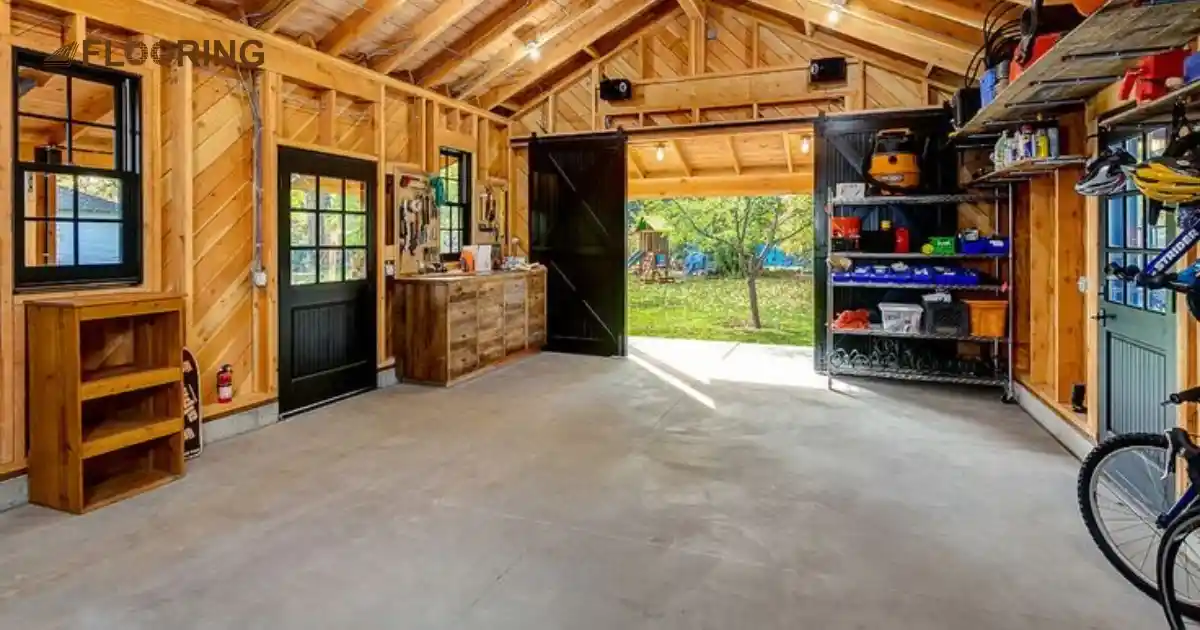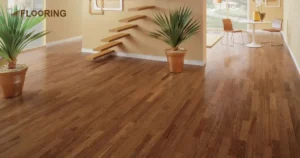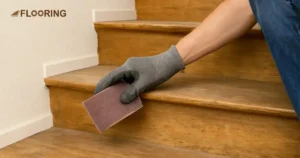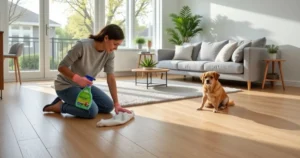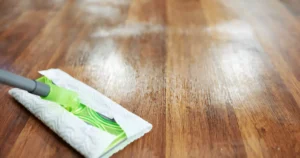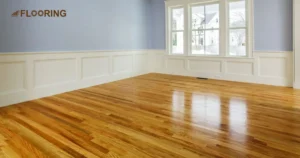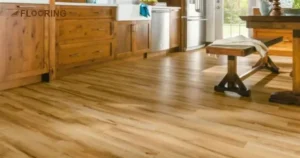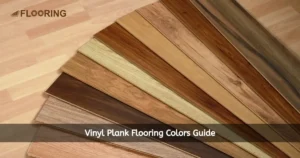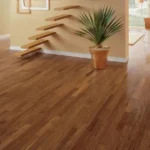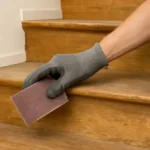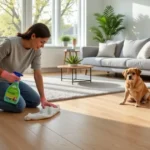When you buy a shed of your dreams and spend a lot of time and money, then it makes sense to increase the life of your shed by doing the best that you can do. The floor of the shed is amongst the important elements when considering to make it your dream shed. The flooring of the shed must be strong and stable and there is no reason why it shouldn’t be appealing and useful as well.
If you are tired of dealing with uneven, damp shed floor which creates problems in organizing your tools and equipment, it’s time to explore some innovative shed floor ideas. This will help you to transform your storage space into an organized oasis from a cluttered mess.
In this article, we are going to explore 15 amazing shed flooring options. This will help you to make an informed decision while choosing the right shed flooring. Because a well-planned floor transition can turn your shed into a versatile space meeting all requirements.
📑 Table of Content
Key Takeaways
- The best shed floor depends on factors like intended use, budget, and personal preferences.
- Concrete, pressure-treated wood, and vinyl are durable and moisture-resistant options.
- Plywood, OSB, and reclaimed materials are budget-friendly choices.
- Proper preparation of the foundation and the use of moisture barriers are crucial for preventing rot and dampness.
- Regular maintenance and cleaning can extend the lifespan of your shed floor.
- Choosing the right flooring material can enhance the overall functionality and aesthetics of your shed.
- Considering eco-friendly and sustainable options like bamboo or recycled materials can reduce your environmental impact.
Why Do You Need a Shed Floor?
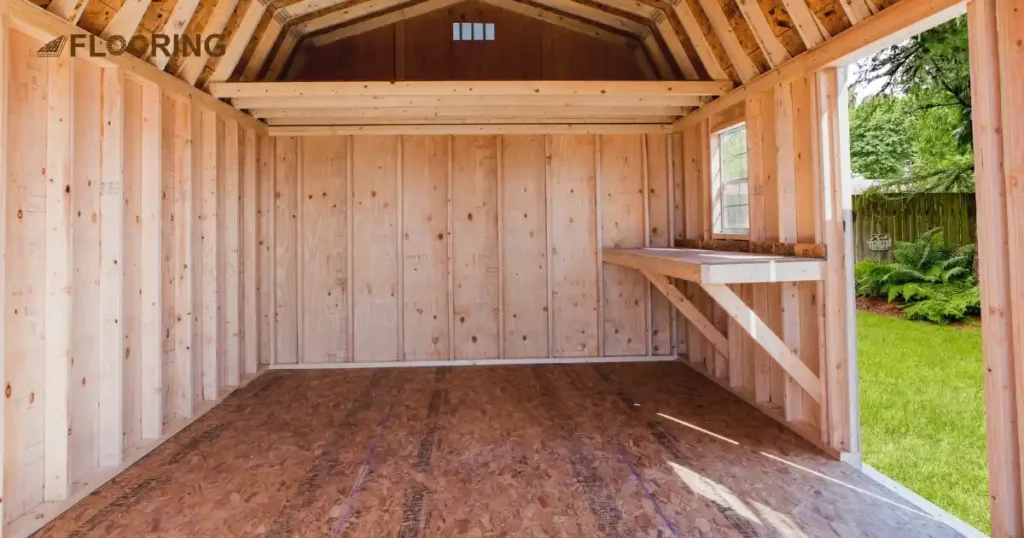
The flooring of your shed is crucial for its construction, regardless of whether you use it to store gardening tools, extra garage items, or as a studio, playroom, or home office. Having shed floors is crucial as they offer a strong foundation for the items you keep stored.
It’s crucial to have a solid foundation for your shed, even if it already has a floor. Placing the shed directly on the ground can cause the timber to decay. Therefore, make sure to consult your shed company to ensure you have the right base for your shed.
Benefits of Choosing the Right Shed Flooring
Selecting the perfect shed floor transforms your storage space. Let’s look at the key benefits of making the right choice for the shed’s flooring.
Better Durability: The right shed flooring prevents damage and increases the lifespan of your shed.
Greater Aesthetics: Attractive flooring enhances the overall appearance and appeal of your shed.
Insulation: Good flooring materials can help regulate the temperature inside your shed, making it more comfortable.
Easy Maintenance: High-quality flooring materials require less maintenance, saving time and effort.
Good Value: Quality flooring also adds value to your property by making your shed more functional and appealing.
Moisture Resistance: Proper flooring prevents moisture and protects your shed and its contents from mold and mildew.
Safety: Non-slip flooring materials reduce the risk of accidents, which makes your shed a safer place to work.
Versatility: With the right flooring, you can use your shed for various purposes, from storage to a workshop.
Factors to Consider When Selecting Shed Flooring
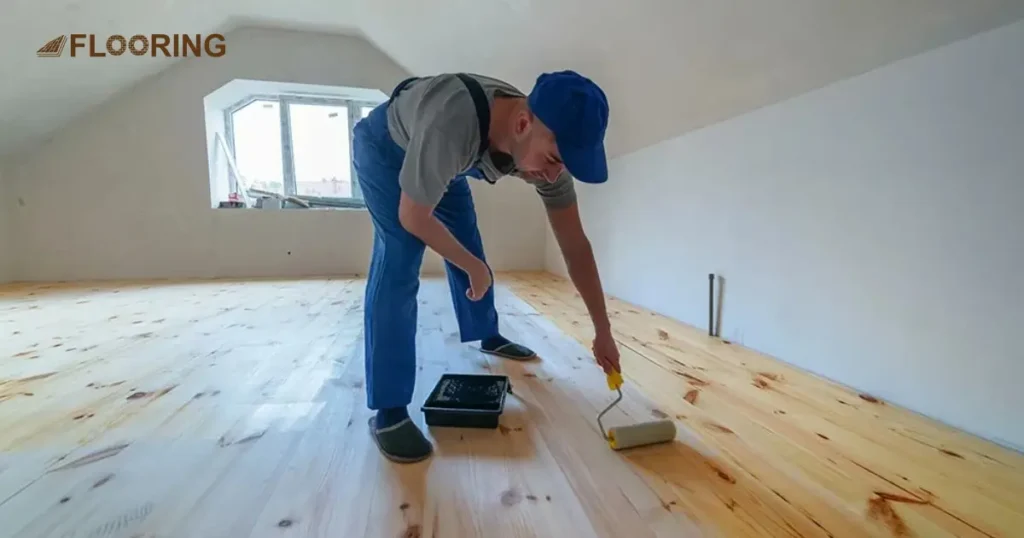
Selecting the right shed flooring involves several factors that you must consider. Each aspect ensures you choose a flooring option that meets your needs and enhances your shed’s functionality.
Shed as an Extended Living Space
Transforming your shed into an extended living space requires careful flooring selection. The floor must be comfortable and durable enough to handle regular foot traffic. Consider options like vinyl or laminate flooring, which provide a cozy feel and are easy to clean.
Proper insulation is also essential to maintain a comfortable temperature year-round. With the right shed floor ideas, you can create a versatile space for hobbies, relaxation, or even as a home office.
Durability
Durability is a primary concern when choosing shed flooring. You want a material that can withstand heavy use and resist wear and tear. Durable flooring ensures your shed remains usable and attractive for years. Selecting high-quality materials reduces the need for frequent repairs and replacements.
Cost
The cost of flooring varies widely, depending on the material therefore it’s important to balance your budget with the need for quality. While cheap shed flooring ideas like reclaimed wood and pallet flooring are budget-friendly. These cheap floorings may not offer the same longevity as more expensive options like concrete or vinyl.
Ease of Installation
Choosing flooring that is easy to install can save time and labor costs. Interlocking tiles and rubber mats are great options for DIY enthusiasts due to their simple installation process. Considering the ease of installation ensures you can complete the project efficiently and with minimal hassle.
Maintenance
Maintenance is another crucial factor. Some flooring materials require regular upkeep to stay in good condition. For instance, wooden floors need sealing and periodic treatments to prevent damage.
On the other hand, materials like vinyl and epoxy are low-maintenance and easy to clean. Opting for a shed flooring material that matches your maintenance preferences can save time and effort in the long run.
Weight a Shed Floor Holds on Average
Understanding the weight capacity of your shed floor is vital, especially if you plan to store heavy equipment. Knowing the average weight a shed floor can hold ensures you choose a material that supports your storage needs without compromising safety or structural integrity.
15 Amazing Shed Floor Ideas
Get ready to transform your shed with these exciting shed flooring ideas. From classic options to innovative solutions, we’ve got you covered. Each idea offers unique benefits, so you’re sure to find the perfect fit for your needs. Here are 15 amazing shed floor ideas that cater to different needs and preferences.
1. Concrete Floors
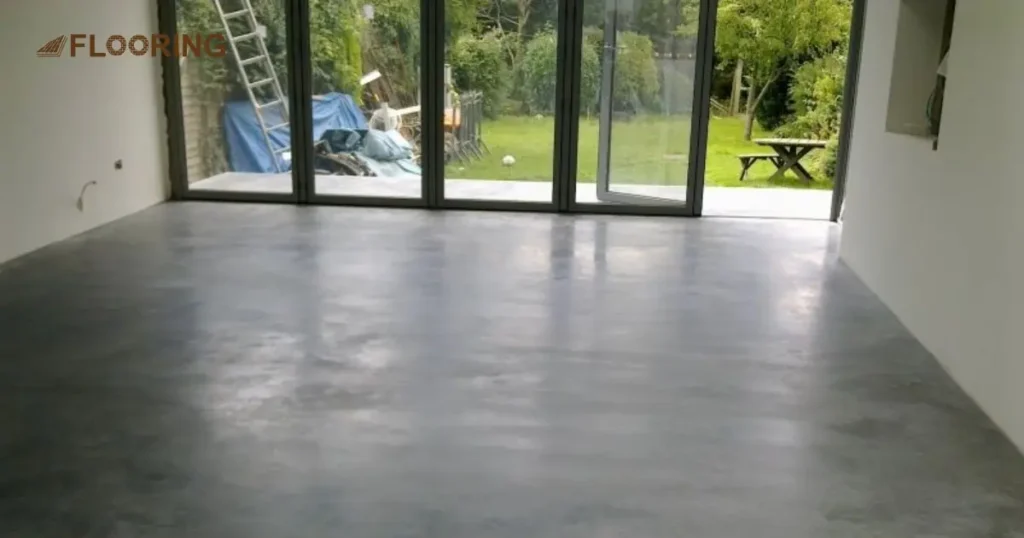
Concrete floors offer exceptional durability and strength, making them ideal for sheds that house heavy equipment or vehicles, also they are resistant to moisture, pests, and fire, ensuring longevity.
You can finish concrete with a smooth surface or textured for slip resistance, providing versatility in design. These floors require minimal maintenance, making them a practical choice for busy homeowners.
2. Wooden Plank Floors
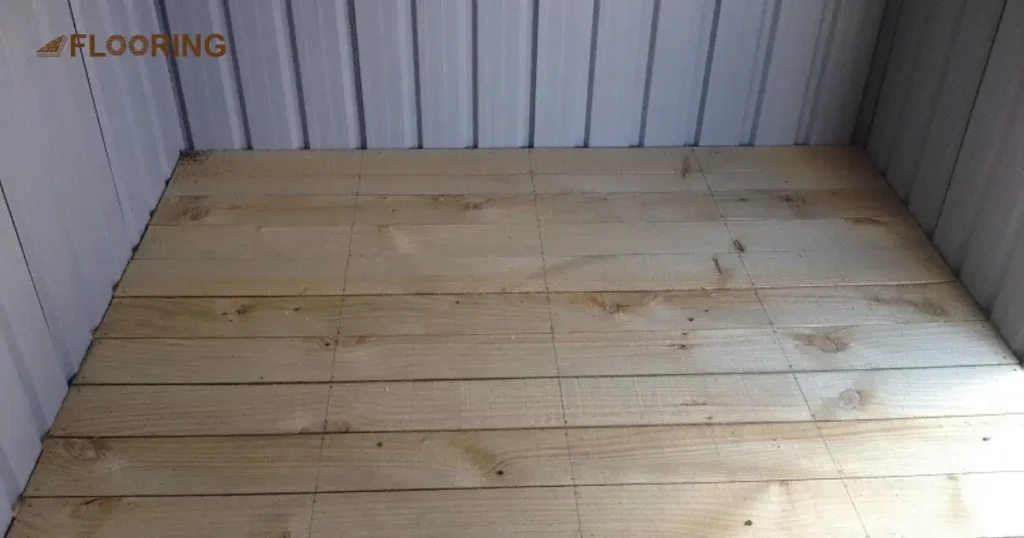
Wooden plank floors provide a classic, rustic look to your shed. They are easy to install and can be made from various types of wood, including reclaimed or pressure-treated lumber. Wooden floors offer natural insulation and a comfortable surface to walk on.
They may require periodic sealing to protect against moisture and pests. Despite this, wooden planks remain a popular choice for their aesthetic appeal and versatility.
3. Rubber Mats

Rubber mats are an excellent option for sheds used as workshops or gyms. They provide a cushioned surface that reduces fatigue and prevents slipping. Rubber mats are easy to clean and resistant to moisture, making them ideal for sheds with high humidity levels.
These mats are also available in various thicknesses and colors, allowing for customization. Their durability and ease of maintenance make rubber mats a practical flooring solution.
4. Vinyl Flooring
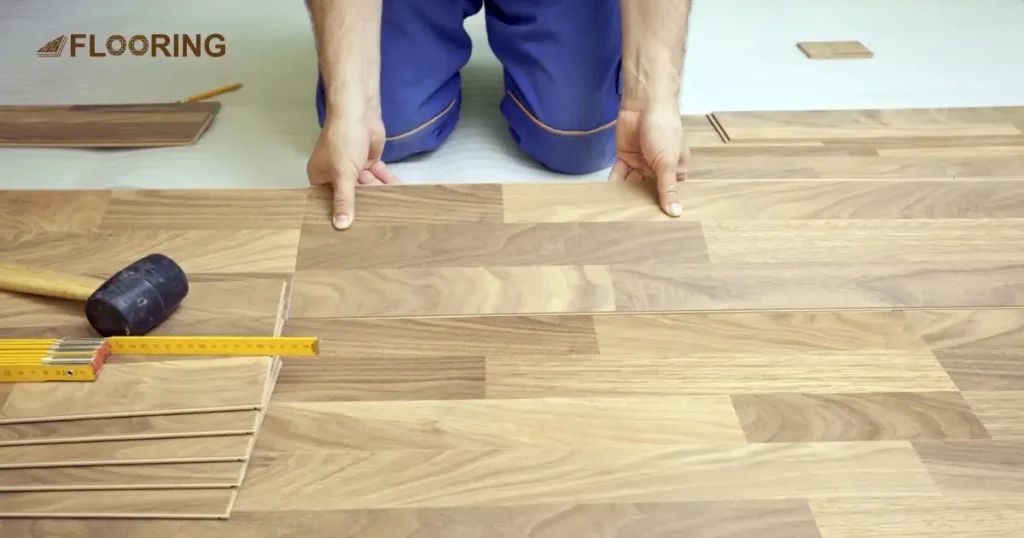
Vinyl flooring is a versatile and affordable option for shed floors. It is available in a wide range of styles and colors, allowing you to create a personalized look. Vinyl is water-resistant, easy to clean, and comfortable to walk on, making it suitable for sheds used as extended living spaces or workshops.
Likewise, vinyl flooring is simple to install, often featuring a peel-and-stick application, making it a favorite among DIY enthusiasts.
5. Plywood Floors
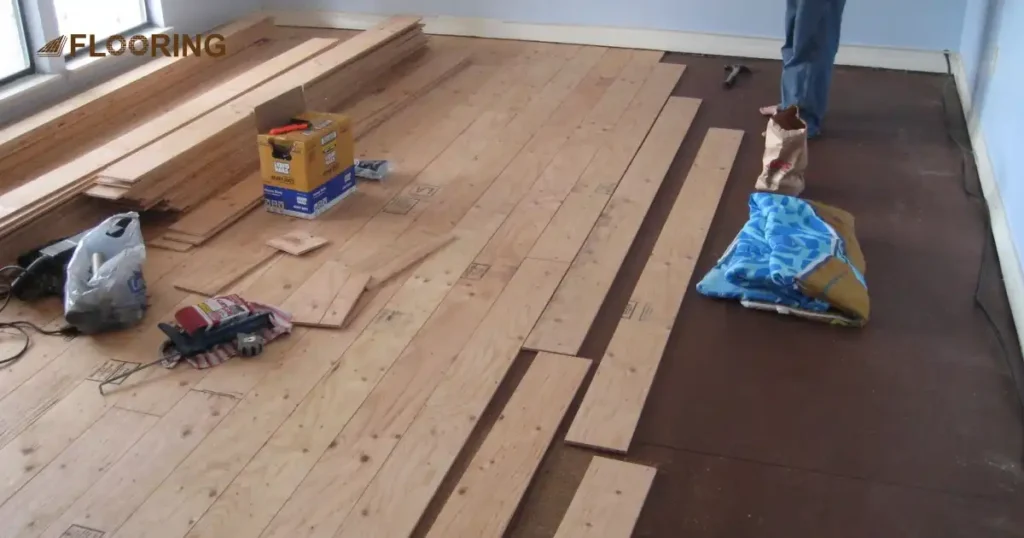
Plywood floors are a cost-effective and straightforward option for shed flooring. They are easy to cut and install, providing a smooth and sturdy surface. Plywood can be painted or sealed to enhance its durability and appearance.
While not as long-lasting as some other materials, plywood floors are suitable for sheds with moderate use. Proper maintenance, such as sealing and painting, can extend their lifespan and improve their resistance to moisture and pests.
6. Epoxy Flooring
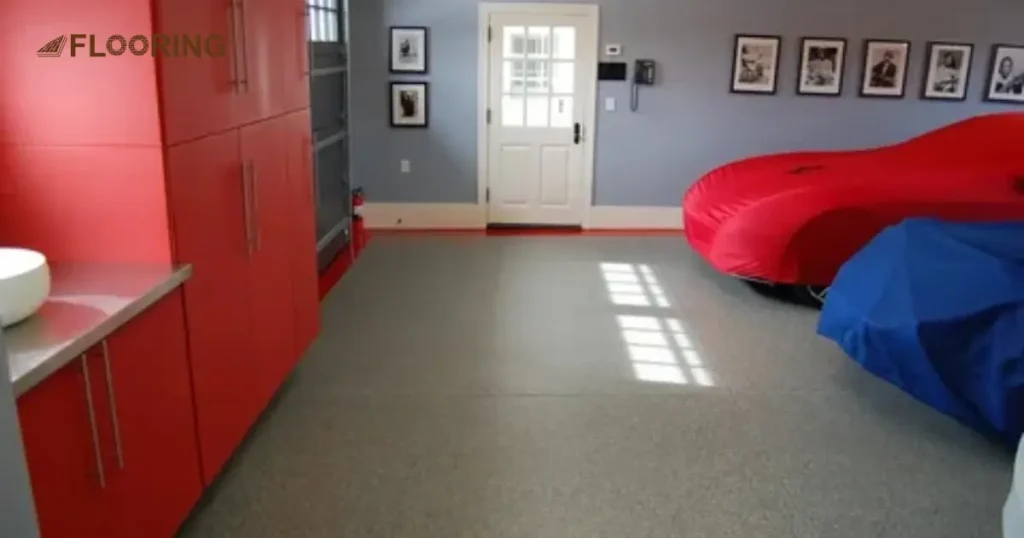
Epoxy flooring offers a sleek, professional finish that is highly durable and resistant to chemicals, stains, and moisture. It is ideal for sheds used as workshops or garages. The installation process involves applying an epoxy resin over a concrete base, creating a seamless and easy-to-clean surface.
Epoxy flooring is available in various colors and patterns, allowing for a customized look. Its high durability and low maintenance requirements make it a popular choice for high-traffic areas.
7. Carpet Tiles
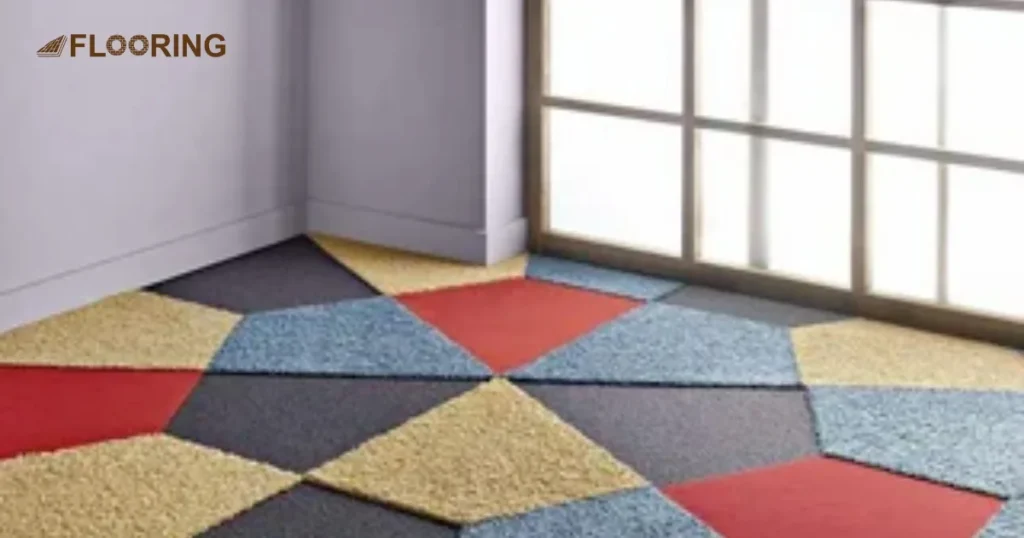
Carpet tiles provide a cozy and comfortable flooring option for sheds used as living spaces or playhouses. They are easy to install, with the flexibility to replace individual tiles if damaged. Carpet tiles offer insulation, reducing noise and maintaining a comfortable temperature.
Various colors and textures are available on these tiles, allowing for creative design possibilities. While they may require more maintenance than other flooring options, carpet tiles add warmth and comfort to your shed.
8. Interlocking Tiles
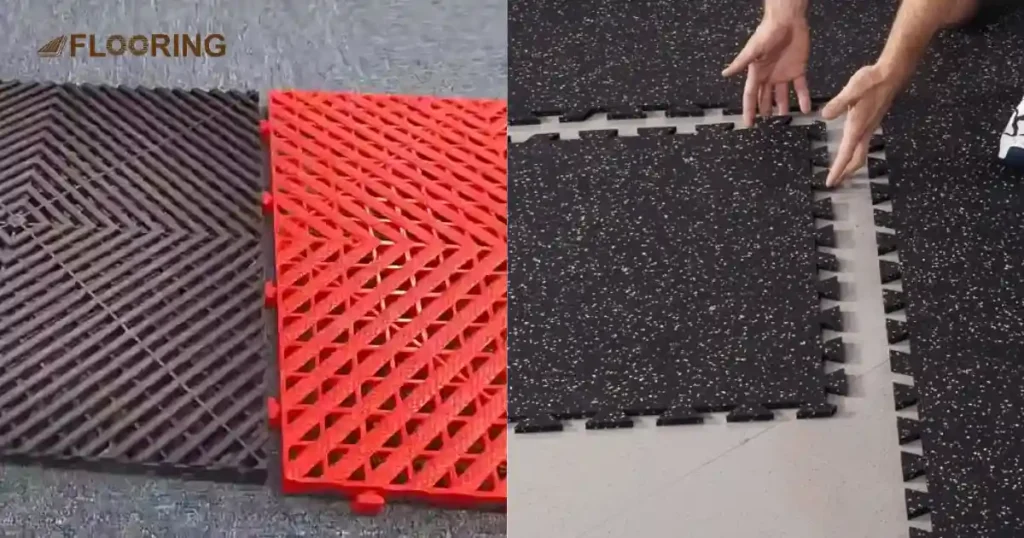
Interlocking tiles are a versatile and easy-to-install flooring option. Made from materials like plastic, rubber, or foam, they provide a durable and cushioned surface. Interlocking tiles snap together without the need for adhesives, making them a popular choice for DIY projects.
They are available in various patterns and colors, allowing for customization. Interlocking tiles are ideal for sheds used as gyms, workshops, or play areas, offering a practical and flexible flooring solution.
9. Pressure-Treated Lumber
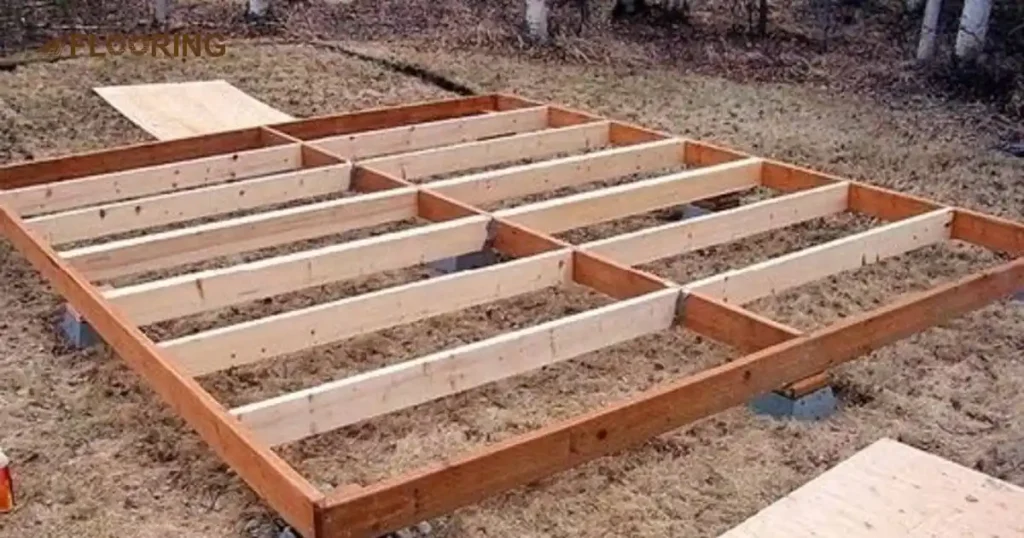
Pressure-treated lumber is a durable and moisture-resistant option for shed floors. The wood undergoes a chemical treatment process that enhances its longevity and resistance to pests and decay.
To get a sturdy and reliable foundation, pressure-treated lumber is perfect for sheds exposed to the elements. While it may require periodic sealing, its strength and durability make it a popular choice for outdoor structures.
10. Laminate Flooring
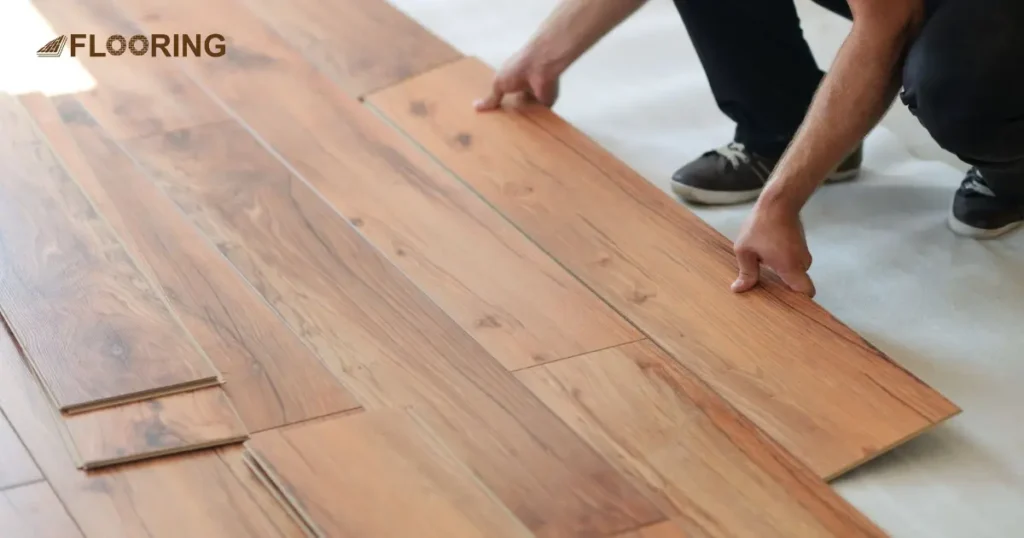
Laminate flooring offers the look of hardwood or stone without the high cost. It is easy to install, often featuring a click-lock system that does not require adhesives. Laminate is durable, resistant to scratches, and easy to clean, making it suitable for high-traffic areas.
Available in a wide range of styles and hues, laminate flooring allows for a customized look. Its affordability and ease of maintenance make it a practical choice for various shed uses.
11. Gravel Flooring
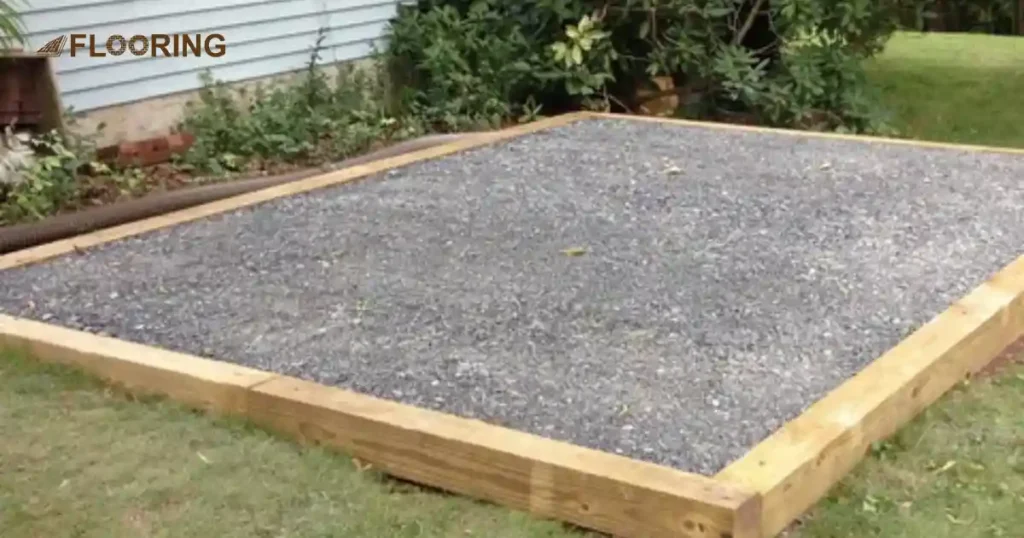
Gravel flooring is a simple and cost-effective option for shed floors. It provides excellent drainage, preventing water buildup and moisture damage. Gravel is easy to install, requiring minimal preparation.
While it may not be suitable for all types of sheds, gravel flooring is ideal for garden sheds or storage areas where heavy equipment is not stored. It offers a natural and rustic appearance that blends well with outdoor surroundings.
12. Brick Pavers
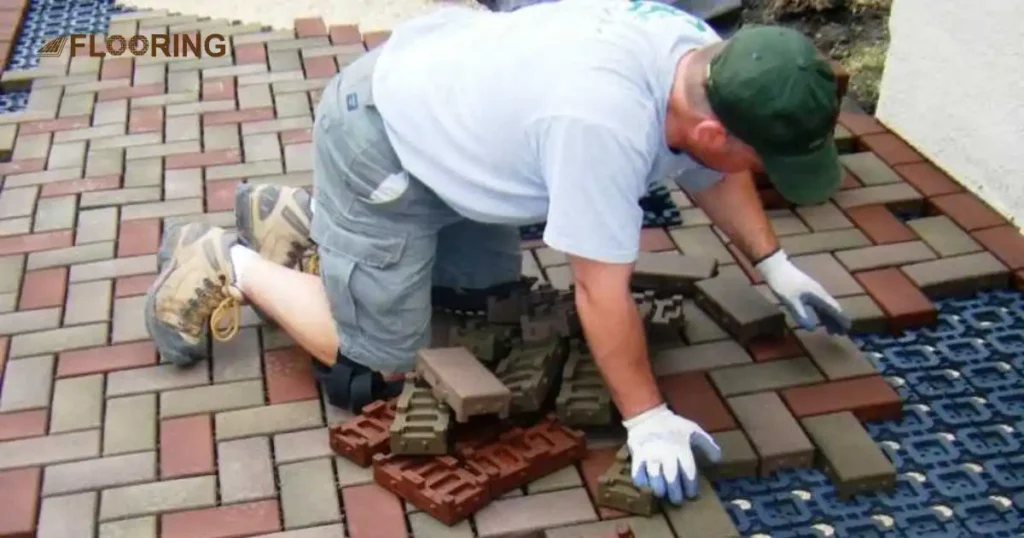
Brick pavers provide a durable and attractive flooring option for sheds. They offer excellent resistance to wear and can support heavy loads, making them suitable for workshops or garages. Brick pavers are available in various colors and patterns, allowing for creative designs.
Installation can be labor-intensive but the result is a long-lasting and low-maintenance floor. Brick pavers add a classic and timeless look to any shed.
13. Foam Tiles
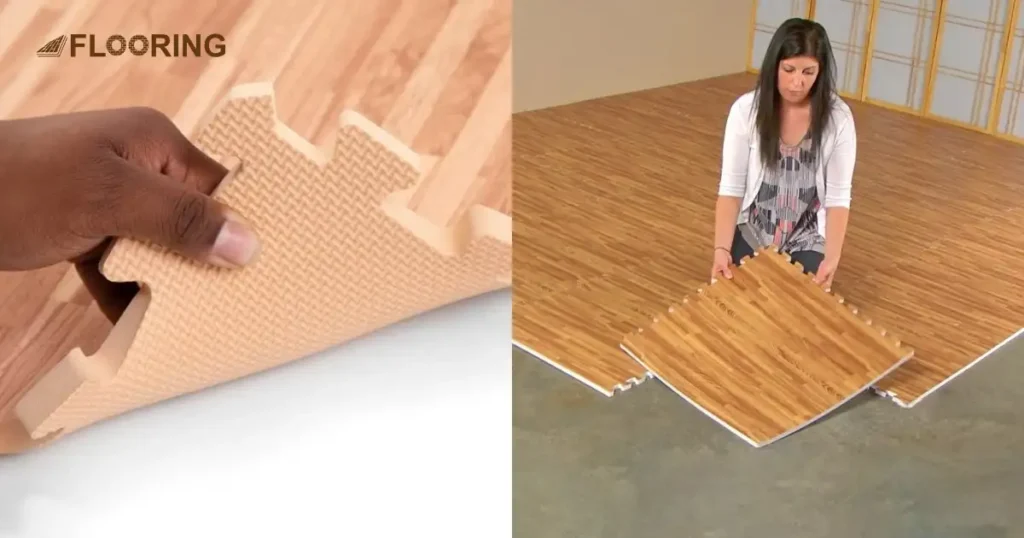
Foam tiles offer a soft and cushioned surface, ideal for sheds used as play areas or home gyms. They are easy to install, with interlocking edges that fit together seamlessly. Foam tiles are available in various colors and thicknesses, providing customization options.
They are water-resistant and easy to clean, making them suitable for areas with high humidity. While they may not be as durable as other materials, foam tiles provide comfort and safety.
14. Cork Flooring
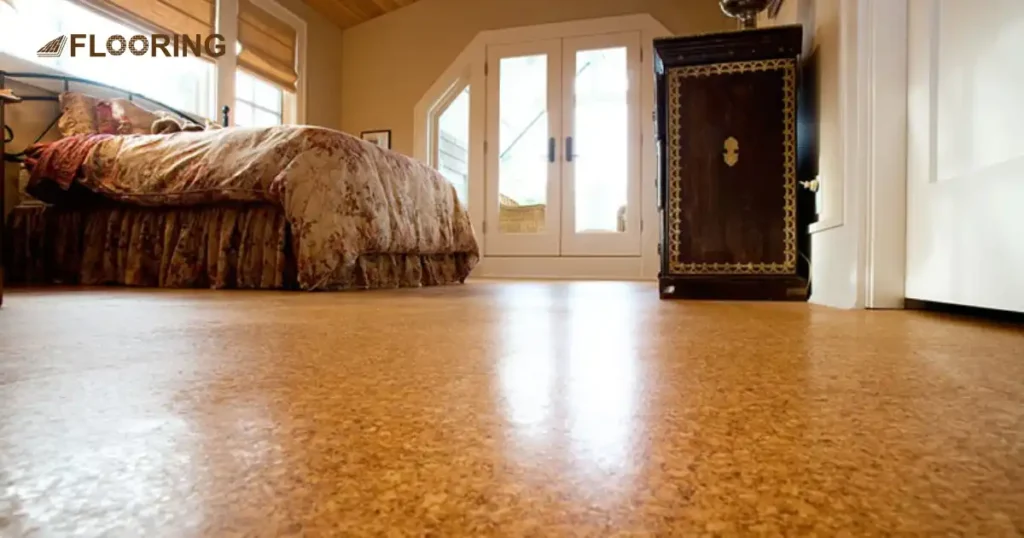
Cork flooring is an eco-friendly option that provides natural insulation and a comfortable surface. It is soft underfoot and offers excellent sound absorption, making it suitable for sheds used as living spaces or workshops.
This flooring is resistant to mold, mildew, and pests, ensuring longevity. While it may require sealing to protect against moisture, cork flooring is a sustainable and attractive choice for various shed applications.
15. Composite Decking
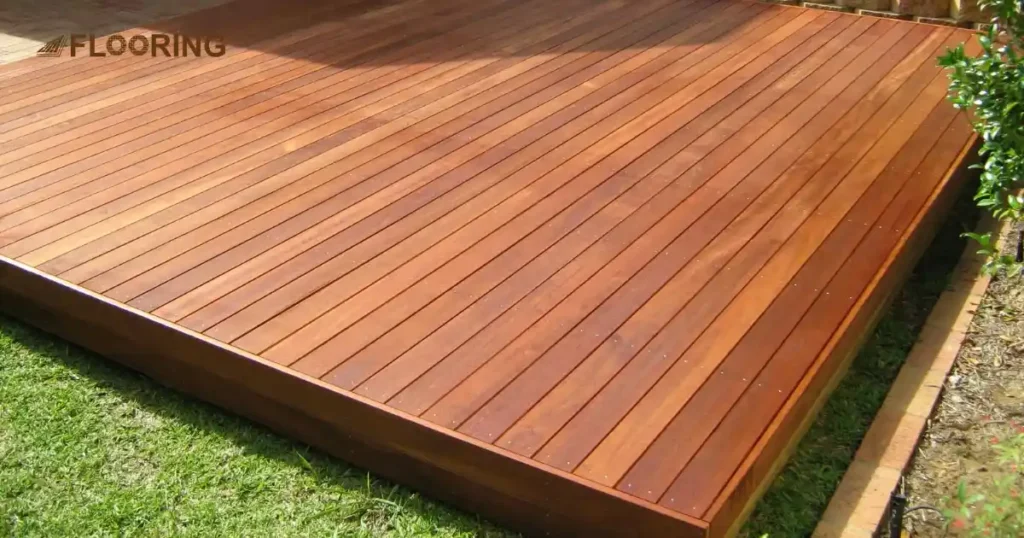
Composite decking offers a durable and low-maintenance flooring option for sheds. Made from a blend of wood fibers and plastic, it is resistant to moisture, rot, and pests. Composite decking provides a sturdy and stable surface, ideal for high-traffic areas.
It is available in various colors and finishes, allowing for a customized look. While it may be more expensive than other options, its durability and minimal maintenance requirements make it a practical choice for long-term use.
Cheap Shed Flooring
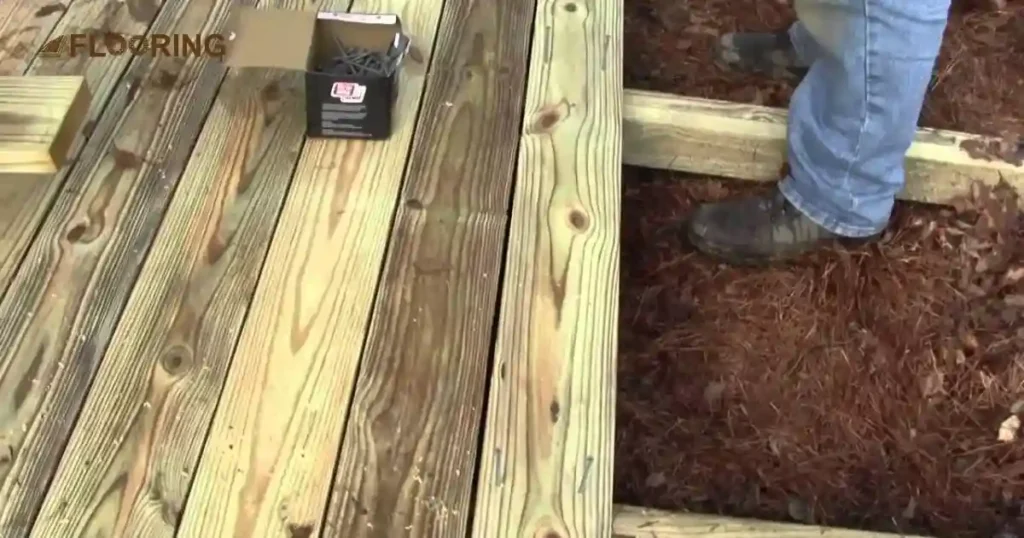
Creating a functional and appealing shed floor doesn’t have to be expensive. Here are some cheap shed flooring ideas that provide great value without breaking the bank.
Reclaimed Wood for Shed Floor
Reclaimed wood is an eco-friendly and cost-effective flooring option. Using wood salvaged from old buildings, barns, or pallets, you can create a unique and rustic look. Reclaimed wood offers natural insulation and a warm, cozy feel.
It may require some cleaning and sanding before installation, but the result is a durable and charming floor. This option not only saves money but also adds character and history to your shed.
Pallet Flooring
Pallet flooring is a budget-friendly and DIY-friendly option. Wooden pallets can be sourced for free or at a low cost, and with a bit of effort, they can be transformed into a sturdy shed floor. Pallets provide good insulation and a rustic appearance.
They can be easily cut and arranged to fit the shed’s dimensions. While pallet flooring may require sealing to protect against moisture and pests, it offers a practical and affordable solution for shed flooring.
Secondhand Shed Floor Carpeting
Secondhand carpeting is an economical way to add comfort and warmth to your shed. Often available at thrift stores or through online marketplaces, used carpets can be cut to size and installed with minimal effort.
Carpeting provides insulation, reduces noise, and offers a cozy surface for sheds used as living spaces or play areas. While it may not be as durable as other materials, secondhand carpeting is a cost-effective and environmentally friendly option for shed flooring.
Flooring Ideas for Different Types of Sheds
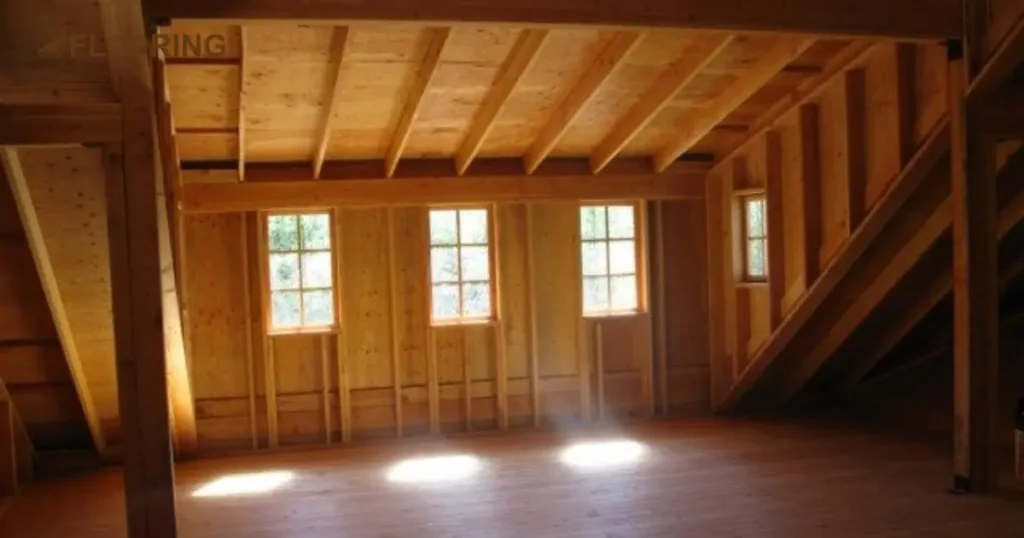
Different types of sheds have specific flooring needs based on their intended use. Here are some flooring ideas tailored to various shed types.
Garden Sheds
Garden sheds benefit from durable and moisture-resistant flooring options like gravel or concrete. These materials provide excellent drainage and can withstand the elements. Gravel is easy to install and offers a natural look that blends well with the garden environment.
Concrete provides a stable and long-lasting surface, ideal for heavy gardening equipment. Both options require minimal maintenance, making them practical for garden sheds.
Storage Sheds
Storage sheds need strong and durable flooring that can support heavy items. Plywood or pressure-treated lumber are excellent choices. Plywood is affordable and easy to install, while pressure-treated lumber offers additional protection against moisture and pests.
Both materials provide a sturdy surface for storing tools, equipment, and other items. Sealing the wood can further enhance its durability and longevity.
Workshop Sheds
Workshop sheds require durable and easy-to-clean flooring options like epoxy or vinyl. Epoxy flooring provides a seamless, chemical-resistant surface that can handle spills and heavy use. Vinyl flooring is comfortable to walk.
Playhouse Sheds
Playhouse sheds should have flooring that’s safe, comfortable, and fun for children. Foam tiles are an excellent choice. They provide a soft surface for play and can help prevent injuries from falls. Plus, they come in bright colors that kids love.
Eco-Friendly Shed Flooring Options
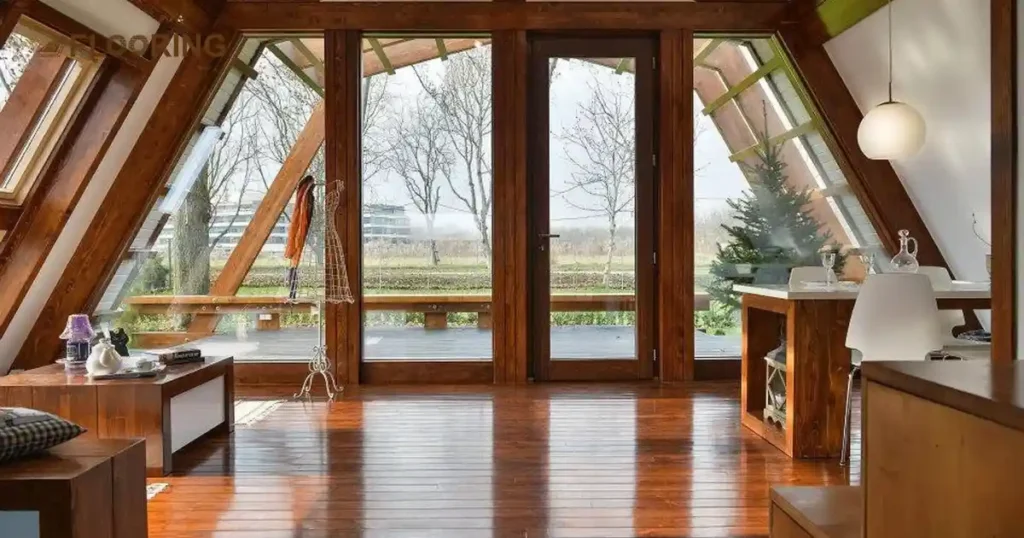
As environmental consciousness continues to grow, several eco-friendly shed flooring options can help reduce your carbon footprint while still providing a functional and attractive solution.
Bamboo Flooring
Bamboo flooring is a sustainable and renewable choice for shed floors. It’s a durable material that can mimic the look of traditional hardwood while being more environmentally friendly.
Recycled Materials
Using recycled materials for your shed floor, such as reclaimed wood, rubber tires, or plastic bottles, can be a creative and eco-conscious way to give new life to discarded items.
Types of Shed Floor Foundations
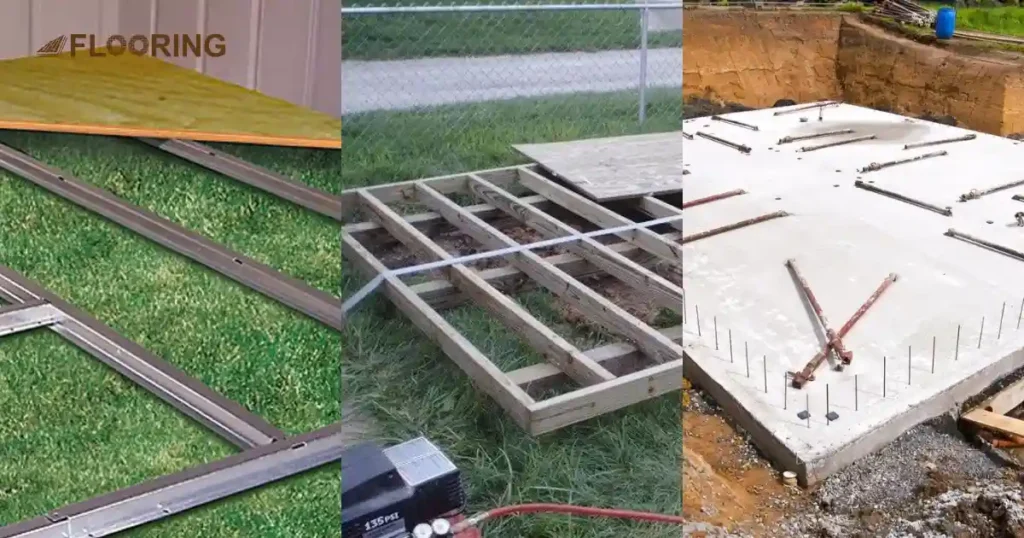
The foundation of your shed is critical to its stability and longevity. Various foundation types offer different benefits, from ease of installation to cost and durability.
Concrete Slab Foundation
A concrete slab foundation provides a sturdy, permanent base for your shed. It’s highly durable and can support heavy weights, making it ideal for large sheds or those storing heavy equipment.
The installation process involves pouring a concrete slab, which requires precise leveling and curing time. While it is more expensive than other options, a concrete slab foundation ensures maximum stability and longevity.
Gravel Pad Foundation
A gravel pad foundation is a cost-effective and straightforward option. It involves spreading a layer of gravel over a leveled area to create a stable base. Gravel pads provide excellent drainage, preventing water accumulation and moisture damage to your shed floor.
These gravel pads are ideal for smaller sheds and those in areas with good drainage. This type of foundation is easy to install and can be completed quickly with basic tools.
Wooden Skid Shed Floor Foundation
Wooden skid foundations are a flexible and portable option. Skids are large wooden beams placed directly on the ground, supporting the shed’s floor. This type of foundation is easy to install and allows for easy relocation of the shed if needed.
It’s suitable for small to medium-sized sheds and works well on uneven ground. However, it may require additional maintenance to prevent rot and pest damage.
Popular Shed Flooring Materials
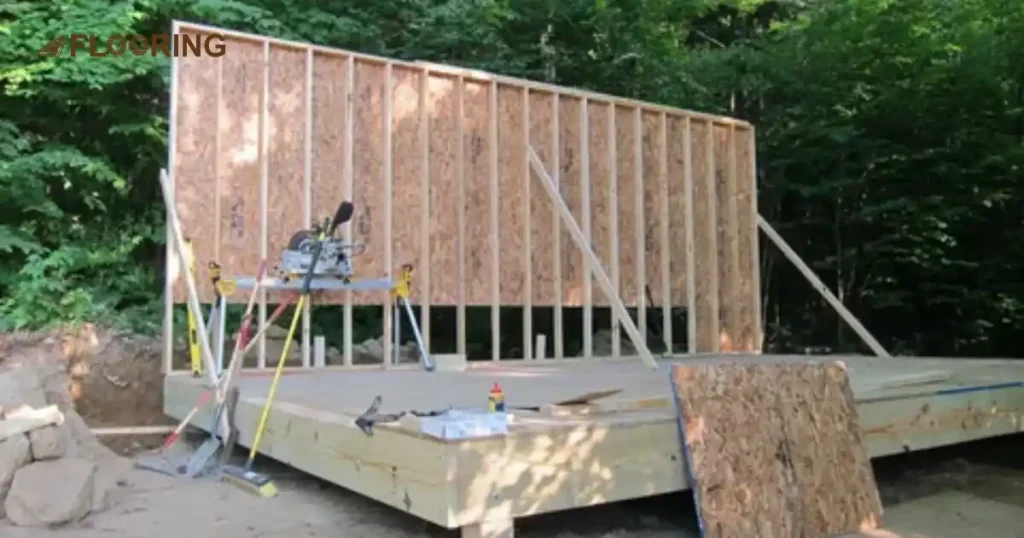
Popular shed flooring materials for your shed are essential for its functionality and longevity. Various materials offer different benefits, from durability to cost and ease of maintenance.
Pressure-Treated Wood
Pressure-treated wood is a popular choice for shed flooring due to its durability and resistance to rot and pests. This material undergoes a chemical treatment process that enhances its longevity, making it ideal for sheds exposed to moisture.
Pressure-treated wood provides a sturdy and reliable foundation, perfect for heavy equipment and frequent use. However, it may require periodic sealing to maintain its protective qualities.
Plywood for Shed Floor
Plywood is an affordable and versatile option for shed flooring. It’s easy to cut and install, making it a favorite among DIY enthusiasts. Plywood offers a smooth surface that can be painted or sealed for added protection.
While it is not as durable as pressure-treated wood or concrete, plywood is a cost-effective solution for sheds with moderate use. Proper maintenance, like sealing and painting, can extend its lifespan.
Oriented Strand Board (OSB)
Oriented Strand Board (OSB) is similar to plywood but made from smaller wood strands bonded together with resin. OSB is a budget-friendly option that provides good strength and stability. It’s suitable for sheds used for storage or light-duty purposes.
OSB is more susceptible to moisture damage than other materials, so it requires proper sealing and protection.
Concrete
Concrete flooring is a highly durable and long-lasting option for sheds. It provides a strong, stable surface that can handle heavy loads and frequent use. Concrete is resistant to moisture, pests, and fire, making it an excellent choice for sheds in various climates.
Although the initial installation cost is higher, the minimal maintenance requirements make it a cost-effective option over time.
Vinyl for Shed Floor
Vinyl flooring is a practical and low-maintenance option for shed floors. It is available in various styles and colors, allowing for customization to match your shed’s interior. Vinyl is water-resistant, easy to clean, and comfortable to walk on, making it suitable for sheds used as workshops or living spaces.
The ease of installation and affordability of vinyl flooring make it a popular choice among shed owners.
Weatherproofing Your Shed Floor
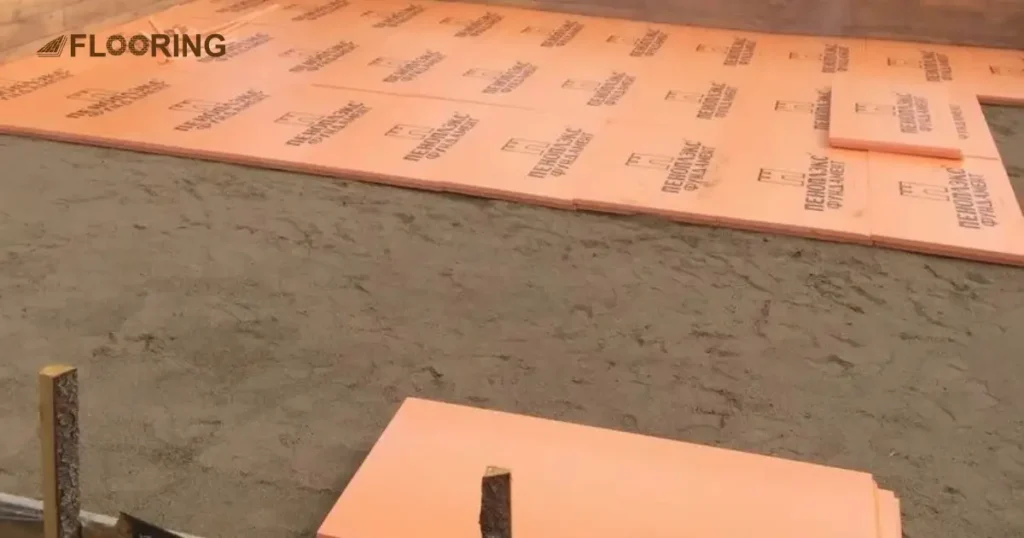
Weatherproofing your shed floor is crucial to protect it from moisture, temperature changes, and wear. Proper weatherproofing ensures your shed remains a functional and comfortable space throughout the year.
Moisture Barriers and Sealants
Moisture Barriers: These are typically plastic sheets or specialized membranes placed between the ground and the shed floor to block moisture from seeping through. They are affordable and easy to install, providing a first line of defense against dampness.
Sealants: These are applied directly to the shed floor surface to create a waterproof layer. They can be used on various flooring materials like concrete, wood, and vinyl. Sealants come in different forms, including liquid, spray, and roll-on, making them versatile for different needs.
Both moisture barriers and sealants help extend the life of your shed floor by protecting it from moisture-related issues like rot and mold.
Insulation Options for Shed Floors
Insulating your shed floor helps maintain a stable temperature inside, making it more comfortable and energy-efficient.
Rigid Foam Insulation: This type of insulation is easy to cut and fit between the floor joists. It provides excellent thermal resistance and moisture protection. Rigid foam insulation is also lightweight and easy to install, making it a popular choice for DIY projects.
Spray Foam Insulation: This insulation expands to fill gaps and cracks, providing an airtight seal. It offers superior insulation properties and helps prevent drafts however, it requires professional installation and can be more expensive than other options.
Fiberglass Insulation: This traditional insulation material is affordable and easy to install. It fits between floor joists and can be used in conjunction with a vapor barrier for added moisture protection. While it may not provide as high a level of insulation as spray foam, it is a cost-effective option for many shed owners.
Enhancing Shed Floor Aesthetics
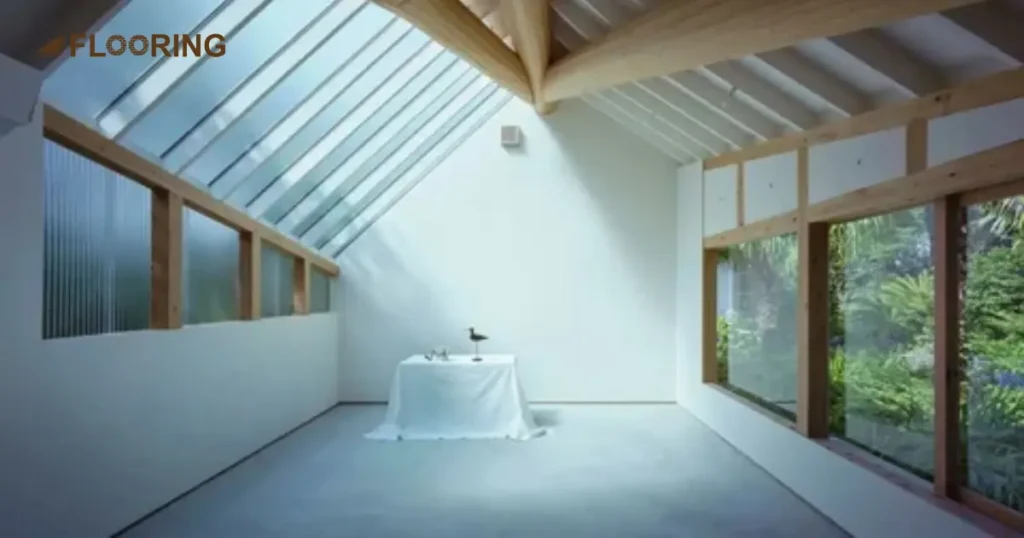
Enhancing the aesthetics of your shed floor can transform it into a more inviting and enjoyable space. There are many ways to improve the look of your shed floor without compromising functionality.
Color and Pattern Options
Adding color and patterns to your shed floor can significantly enhance its appearance.
Paint: Using floor paint in bright or neutral colors can instantly refresh the look of your shed. Paint is an affordable and easy-to-apply option that allows you to customize the floor to match your style.
Stains and Dyes: These can be used on concrete and wood floors to create a rich, natural look. Stains penetrate the surface, providing a long-lasting finish that highlights the material’s texture.
Tiles: Interlocking or peel-and-stick tiles come in various colors and patterns, offering endless design possibilities. Tiles are easy to install and replace, making them a practical choice for shed floors.
Decorative Shed Floor Coatings
Decorative floor coatings can add both beauty and protection to your shed floor.
Epoxy Coatings: These provide a glossy, durable finish that is resistant to stains, chemicals, and wear. Epoxy coatings are available in various colors and can include decorative flakes or metallic pigments for a unique look.
Polyurethane Coatings: These offer a high-gloss finish that enhances the appearance of the underlying floor material. They are also durable and resistant to scratches and UV damage.
Concrete Overlays: These can be applied to existing concrete floors to create a decorative surface. Overlays come in various colors and textures, allowing you to achieve the look of stone, brick, or tile without the high cost.
Maintenance Tips for Shed Flooring
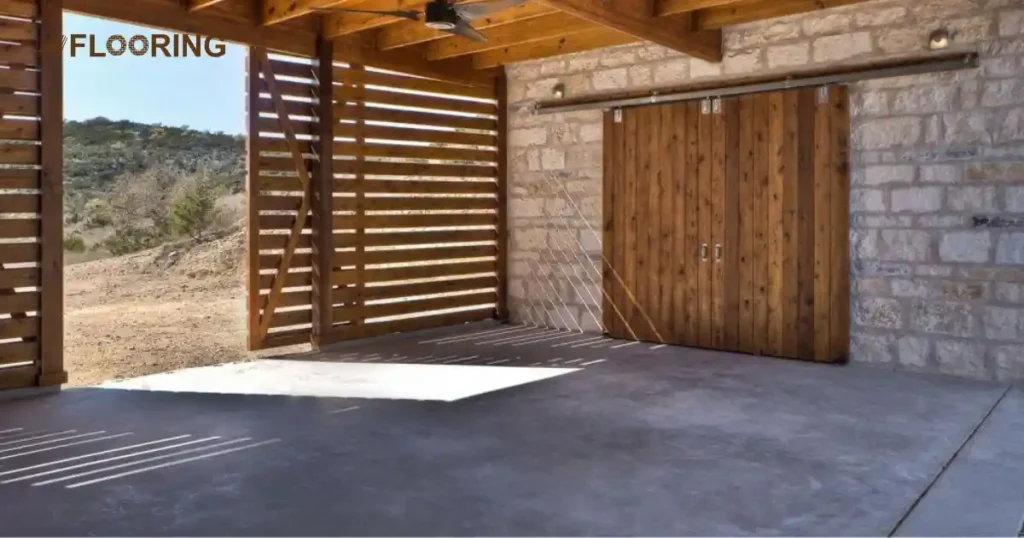
Proper maintenance is key to ensuring your shed floor remains in good condition for years. Here are some practical tips to keep your shed flooring in top shape.
| Maintenance Task | Description |
| Regular Cleaning | Sweep and mop the shed floor to remove dirt and debris. |
| Moisture Control | Use dehumidifiers or ventilation to prevent dampness. |
| Sealant Application | Reapply sealant to protect against water damage. |
| Inspect for Damage | Check for cracks, rot, or wear regularly. |
| Repair Damages | Fix any issues promptly to prevent further damage. |
| Protect Surface | Use mats or rugs in high-traffic areas. |
| Avoid Heavy Loads | Do not overload the floor with heavy equipment. |
| Pest Control | Keep the area free of pests to avoid damage. |
| Seasonal Checks | Inspect the floor before and after harsh weather. |
| Refinish Wood Floors | Sand and refinish wooden floors as needed. |
Regular maintenance helps preserve the appearance and functionality of your shed floor. Addressing minor issues promptly can prevent costly repairs and extend the life of your flooring.
Common Mistakes to Avoid When Choosing Shed Flooring
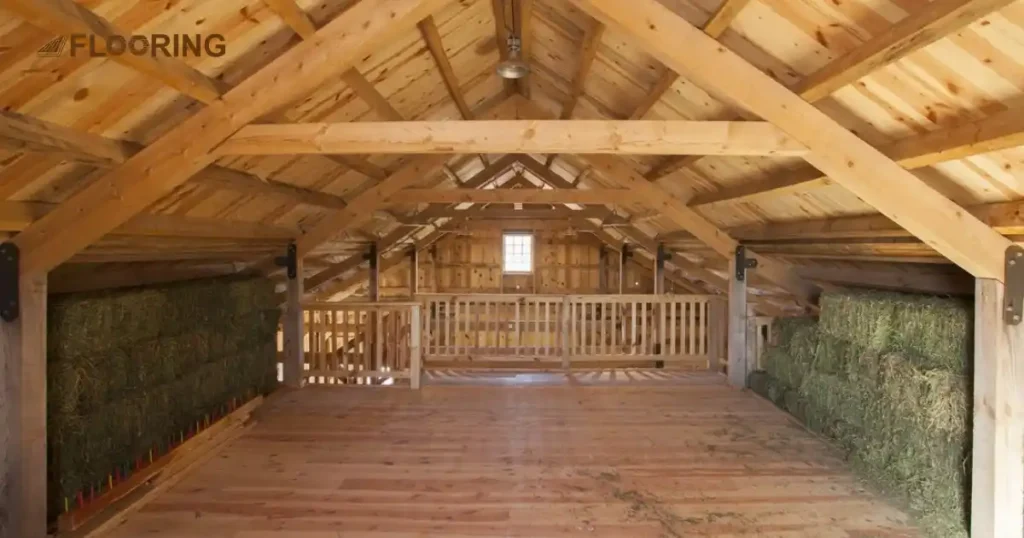
Selecting the right floor for sheds can be tricky. Many homeowners make costly mistakes that lead to problems down the line. Here are some common pitfalls to avoid when choosing your shed flooring:
Ignoring moisture issues: Failing to address ground moisture can lead to rot and mold growth.
Choosing the wrong material: Not all flooring materials are suitable for shed use. Consider durability and weather resistance.
Skipping proper foundation: A solid foundation is crucial for a long-lasting shed floor.
Neglecting insulation: Proper insulation can make your shed more comfortable and energy-efficient.
Forgetting about weight capacity: Ensure your chosen flooring can support the weight of stored items.
Overlooking maintenance needs: Some floors require more upkeep than others so, consider your willingness to maintain the floor.
Prioritizing cost over quality: Cheap materials may save money upfront but often lead to costly repairs later.
Ignoring local building codes: Some areas have specific requirements for shed construction, including flooring.
Failing to seal properly: Inadequate sealing can damage moisture and shorten floor life.
Not considering the shed’s purpose: Different uses require different flooring solutions.
By avoiding these common mistakes, you can choose a shed flooring material that will serve you well for years to come. Remember, a little extra thought and investment in your shed floor can save you time, money, and headaches in the future.
Frequently Asked Questions
What is the best floor to put in a shed?
The best floor for sheds depends on your specific needs and budget. Concrete is durable and moisture-resistant, making it a top choice for many. For a warmer feel, pressure-treated wood offers strength and natural appeal.
What is the cheapest way to floor a shed?
The cheapest shed flooring ideas often involve DIY solutions while gravel is an affordable option that provides good drainage. Another budget-friendly choice is using reclaimed wood or pallets, which can be repurposed into a sturdy floor.
What is the best base for a shed floor?
A solid foundation is crucial for any shed floor. A concrete slab provides the most stable and long-lasting base. For a more budget-friendly option, a well-compacted gravel pad can also serve as an effective foundation.
What is the best solution for a shed floor?
The best solution often combines durability, moisture resistance, and cost-effectiveness. Pressure-treated plywood over a moisture barrier is a versatile option. It’s strong, relatively affordable, and can be easily replaced if damaged.
How do I stop my shed floor from rotting?
To prevent rot, start with a good moisture barrier beneath your floor. Use pressure-treated wood for the frame and flooring, and apply a water-resistant sealant to all wood surfaces, and ensure proper ventilation in your shed.
How do you waterproof a shed floor?
Waterproofing starts with a plastic moisture barrier under the floor. For wooden floors, apply a waterproof sealant. If using concrete, apply a concrete sealer to prevent moisture absorption.
Can you paint a shed floor?
Yes, you can paint a shed floor. For concrete floors, use a specially formulated concrete floor paint. For wooden floors, use exterior floor paint after properly cleaning and priming the surface.
Can you use the carpet for a shed floor?
While possible, carpet isn’t ideal for most shed flooring ideas. It can trap moisture and is hard to keep clean in a shed environment. If you choose carpet, use indoor/outdoor varieties and install a proper moisture barrier underneath.
Can a shed floor be replaced?
Yes, a shed floor can be replaced. The process involves removing the old flooring, inspecting and repairing the underlying structure if needed, and installing new flooring. It’s a good opportunity to upgrade your shed’s foundation and moisture protection.
Conclusion
When exploring shed floor ideas, it’s clear that there are many options to suit various needs and budgets. From the durability of concrete to the traditional appeal of wooden planks, each type of flooring offers unique benefits. Choosing the right shed flooring material ensures your shed is functional and aesthetically pleasing.
In addition to practicality, considering wood floor benefits can significantly enhance your shed experience. Wood floors provide warmth, natural beauty, and a comfortable feel underfoot, making them a popular choice for many shed owners. Proper maintenance and weatherproofing can extend the lifespan of your shed floor, making it a long-lasting investment.
Whether you’re looking for cheap shed flooring ideas or premium solutions, the right choice will depend on your specific needs and preferences. With careful planning and consideration, you can create a shed floor that is both durable and visually appealing.
